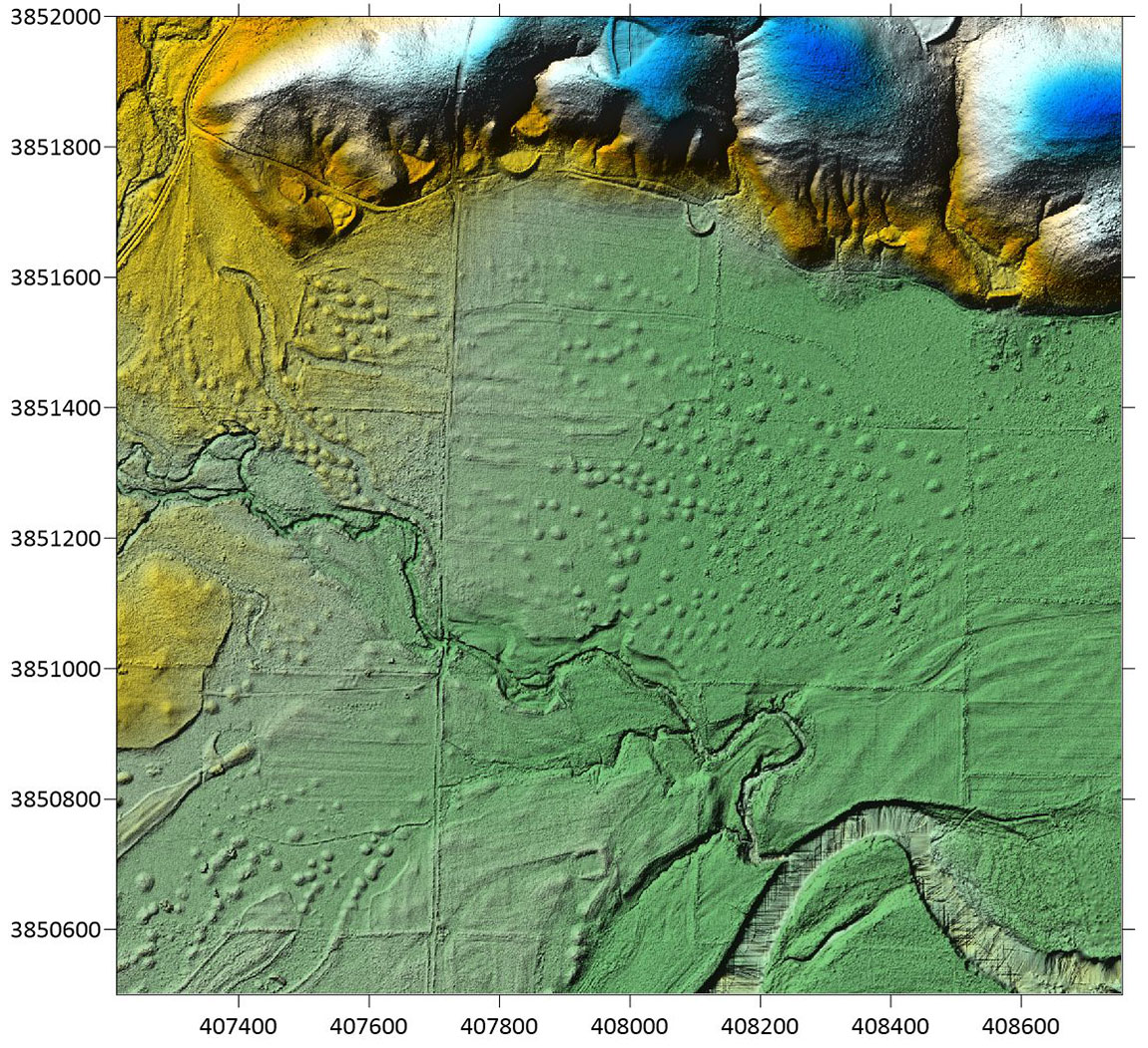
Michelle Rathgaber
Feature of the Month - June 2023
We have been showcasing features here for a while now, so I thought I would take the opportunity to discuss a geological feature that is often mistaken for an archeological feature: the prairie mound. These features can be distinguished through excavation, but, sometimes, also by looking at other contextual information across the landscape. Prairie mounds, also known as pimple mounds or mima mounds depending on where you are and who you talk to, occur throughout Arkansas and are unique remnants of ancient tallgrass prairies.
Prairie mounds are “low, naturally occurring hillocks, randomly distributed over level terrain or more rarely on hill slopes” (Quinn 1968; Figure 1). These features have often been misattributed as human-made (even in the source quoted above) due to their characteristically round shape and the fact that prairie mounds are found in the same areas as human-made mounds in Arkansas. If you have never seen or heard of a prairie mound before, they do seem like something that had to have been constructed by humans due to their regularity and similarity to what we know are human-made mounds. A big difference between the two at first glance is that human-made mounds vary in size, and there are often multiple sizes but a limited number of mounds at a single site; whereas prairie mounds are typically 10–30 m in diameter and about 0.5–1.5 m high, with multiple mounds spread across a single field, and in areas where tallgrass prairies were, at one time, the dominant vegetation type (Figure 2; Lee and Carter 2010; Durre et. al. 2019). These differences in size and distribution provide clues as to which type of mound is present. The presence of artifacts on the surface can indicate a human-made mound. On the other hand, it is always possible that people used the naturally occurring prairie mounds as a high point in an area and left artifacts behind, so the presence of artifacts is not necessarily diagnostic of human-made mounds.

Prairie mounds and human-made mounds vary in their internal composition. People constructed mounds by bringing individual baskets full of soil and dumping them into a pile to form a raised area. They often built houses on these raised areas, eventually burned the house, piled more basket loads of soil on top of the house, and then constructed another structure on top. Eventually, this would result in a tall, human-made mound. In other cases, a mound was built in one construction episode, but still using basket loads of soil. When a mound is excavated, we can see these basket loads in the profile of the excavation unit (Figure 3; Ford 2022).

Prairie mounds, on the other hand, have a very different internal structure. Lee and Carter (2010) found that the top layer (0–99 cm) of the mound they were studying was silt loam followed by a layer of fine gravelly silt loam (99–119 cm), and more silt loam (119–146 cm) (Figure 4). These fine soil textures found in prairie mounds suggest an aeolian (or wind deposited) origin for the mounds. These deposits are also referred to as loess. Geologists disagree about how old prairie mounds are, but dates range from the middle to late Holocene (2400–700 years ago)(Seifert et al 2009) to the Late Pleistocene (ca. 129–11.7 kya) (Durre et. al. 2019).

Citations:
Durre, Tyler, Kristofor R. Brye, Lisa S. Wood, Edward E. Gbur. 2019. Soil moisture and mound position effects on soil profile properties in a native tallgrass prairie in northwest Arkansas, USA. Geoderma 352:49-60.
Ford, Paige A. 2022. Mound S at Plum Bayou Mounds. Feature of the Month for December. Arkansas Archeological Survey. https://archeology.uark.edu/features/mound-s/
Lee, Brad and Brian Carter. 2010. Soil morphological characteristics of prairie mounds in the forested region of south-central United States. 19th World Congress of Soil Science, Soil Solutions for a Changing World. 1-6 August 2010, Brisbane, Australia.
Lee, B.D., R.C. Graham, and S.A. Mahan. 2016. Prairie mound morphology and age in the Arkansas River Valley, south-central United States. Soil Science Paper Number 3874, American Geosciences Institute, Alexandria, Virginia.
Quinn, J.H. (1968). Prairie mounds. In Geomorphology. Encyclopedia of Earth Science. Springer, Berlin, Heidelberg. https://doi.org/10.1007/3-540-31060-6_298
Seifert, Christopher L., Randel Tom Cox, Steven L. Forman, Tom L. Foti, Thad A. Wasklewicz, Andrew T. McColgan. 2009. Relict nebkhas (pimple mounds) record prolonged late Holocene drought in the forested region of south-central United States. Quaternary Research 71:329-339.
Feature of the Month Series
Archeological features are elements or structures that are nonportable or cannot be easily removed from a site (such as a wall or a post hole). Archeologists document archeological features extensively in the field to record what will otherwise be destroyed in the process of excavation. The records of these features are often all that is left at the end of an excavation. Excellent record keeping is necessary for these features to provide insight into the archeological record and site formation.
In this series, we present interesting and important archeological features that have helped archeologists to better or more fully understand the sites on which they were working. New features will be added monthly. Find the list of features here.
